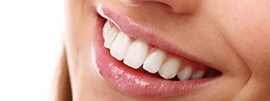Orthodontics for Children
Types of orthodontic treatment for children:
- Interceptive Orthodontic treatment is also known as Phase 1 treatment or Early treatment. This is treatment carried out between the ages of 8 and 12 when a child has a mixture of baby and adult teeth and the top jaw has not yet completed its natural growth.
- Comprehensive Treatment is also known as Phase 2 or Comprehensive fixed appliance (“Full Braces”) treatment. This is the orthodontic treatment provided when all adult teeth have erupted and the face is undergoing active growth during puberty (11-15 years of age depending on each child’s individual growth and skeletal development pattern).
Interceptive treatment is not appropriate for all patients, however, this will be determined by the orthodontist at the consultation.
Interceptive/preventive orthodontic treatment allows your orthodontist to:
- Correct and normalise the growth of your child’s jaws to assist full eruption of the permanent teeth;
- Create space for the full eruption of the permanent teeth in a way that nature may not allow naturally. Note: The upper jaw does get wider after the age of 5. It only gets longer behind the last standing tooth.;
- Create more space for permanent teeth by actively guiding eruption;
- Prevent the need for tooth extractions later in life;
- Correct the consequences of thumb-sucking habits and to assist in the correction of some speech and gum problems;
- Reduce the risk of injury to protruding teeth and jaw joints;
- Improve the upper jaw shape and widen the smile;
- Improve the smile and self-confidence of your child;
- Eliminate the need for restorative dentistry (“fillings”) on front teeth due to cross bites or abnormal wear from tooth-grinding (bruxism);
- Reduce or eliminate the need for corrective jaw surgery in the case of underbites or cross bites of back teeth
How do I know if my child will benefit from interceptive orthodontic/ orthopaedic treatment?
Here are a few helpful things to look for that may mean that your child needs to see an orthodontist:
- Finger or thumb sucking;
- Difficulty in chewing food;
- Early or late loss of deciduous (“baby”) teeth;
- Mouth breathing or a history of ear, nose and throat problems as an infant (that may have negative consequences for upper jaw growth);
- Teeth or jaws that come together abnormally or do not meet at all;
- Crowded, misplaced or blocked out teeth;
- Teeth that are not proportionate to the size of the face;
- Crowded front teeth at the age of 8;
- Jaws that make sounds when opening or closing;
- Early wear of teeth before the age of 10 (from grinding-related damage)
- Extraction of teeth due to decay, prior to the normal time when the baby teeth should be lost.
- A speech defect due to a lack of contact of the front teeth.
The most effective, modern way to determine the degree of skeletal maturation is to analyse the cervical spine in an X-Ray. The evidence-based use of the Cervical Spine Maturation Index allows BVO patients to benefit from shorter treatment times and more effective treatment.
Two-phase orthodontic treatment
What is the advantage of two-phase orthodontic treatment?
Two-phase orthodontic treatment is a specialised process combining ideal facial bone alignment with tooth straightening. The subsequent facial enhancements range from an increased width of the smile to an enhanced balance of the upper and lower jaws with each other.
The purpose of two-phase treatment is to maximise the opportunity to accomplish the ideal of a healthy, functional, and aesthetic result that will remain stable throughout life.
Phase One
The foundation for a lifetime of beautiful smiles
The goal of Phase One treatment is to help the jaws develop in a way that will accommodate all of the permanent teeth and improve the way the upper and lower jaws fit together. Children often exhibit early signs of jaw problems as they grow and develop. An upper jaw that is too narrow or set back too far can be recognised at an early age. If children over the age of eight are found to have this jaw discrepancy, they are candidates for early interceptive orthodontic treatment. In addition, if children around the age of eight have crowded front teeth, early treatment can prevent the need for the extraction of permanent teeth later.
Resting Period between first and second phases
In this phase, the remaining permanent teeth are left to erupt into an improved environment. Night-time retainers are usually provided to assist with eruption. A successful first phase will have created room for permanent teeth to allow a more ideal eruption path.
At the end of the resting period, all upper and lower teeth may not be in their ideal positions. This will be determined over time and improved in the second phase of treatment.
Phase Two
The goal of the second phase is to make sure that each tooth has an exact location in the mouth where it rests in harmony with the lips, cheeks, tongue, and other teeth. When this equilibrium is established, the teeth will function together properly and look beautiful . Phase Two usually involves full upper and lower braces.
The second phase begins when all permanent teeth have erupted, and usually requires braces on all the teeth for an ideal outcome. Retainers are placed after this phase to ensure you retain your beautiful smile.









